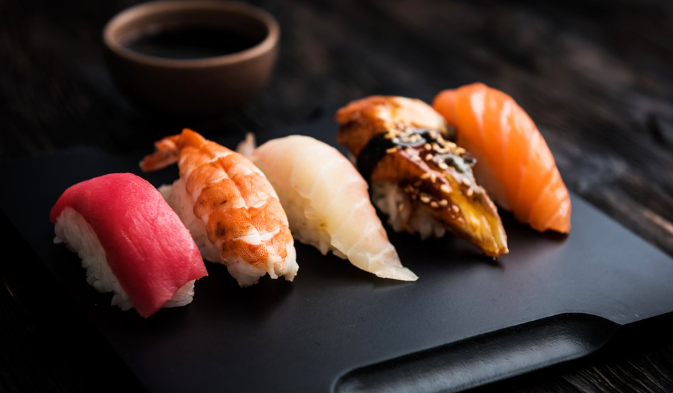Japanese cuisine boasts an abundance of culinary treats, yet none are as revered as sushi and sashimi. Both traditional dishes share an origin but differ significantly in preparation, ingredients, nutritional content, and nutritional needs. Let’s dive deep into this debate between sushi vs sashimi to understand their distinct nuances that define both dishes as distinct products.
Ingredients and Preparation Methods
Sushi is an iconic Japanese cuisine consisting of vinegared rice mixed with a selection of fresh ingredients such as vegetables or seafood, wrapped in seaweed and cut into bite-size pieces. Popular filling options for sushi range from classic raw fish such as salmon and tuna to vegetarian choices such as avocado or cucumber; typically soy sauce, wasabi and pickled ginger are used to elevate its flavors further.
Sashimi stands out as an easy, straightforward dish to prepare, featuring thinly sliced raw meat or fish cuts served without rice or other toppings – commonly salmon, tuna, halibut and squid are popular selections. Sashimi-grade seafood must be carefully selected and handled to maintain freshness; often using individual hand lines it must then be immediately frozen after capture to preserve quality.
Nutritional Differences
When it comes to nutrition, sushi and sashimi differ significantly. Sushi tends to contain higher quantities of carbohydrates and fiber than sashimi due to the inclusion of rice, seaweed, and vegetables whereas the latter offers protein and heart-healthy fats from raw meat or fish alone.
Comparing their nutritional profiles, one 3.5-ounce serving of California sushi roll contains 93 calories, 3 grams of protein, and 1 gram of fat while the same portion of smoked salmon sashimi provides 179 calories with 21.5 grams of protein and 11 grams of fat – these figures demonstrate its nutritional advantages over California sushi roll in particular when it comes to protein content.
Considerations and Downsides of Considerations and Downsides
Sushi offers immense versatility for accommodating various dietary preferences through its variety of fillings; however, some sushi rolls contain refined carbohydrates and sodium at levels which could alter blood sugar and blood pressure levels. Furthermore, raw fish found in both sushi and sashimi is associated with risks for foodborne illness such as mercury poisoning – prompting caution among vulnerable groups such as pregnant individuals or young children.
At its core, sushi and sashimi offer unique culinary experiences, each boasting its own set of benefits and considerations. While sushi may tempt us with its array of flavors and textures, sashimi charms with its emphasis on premium ingredients – both are sure to leave us wanting more! Regardless of which Japanese delicacies we indulge in regularly – both provide delightful culinary journeys while prioritizing health and well-being!
https://sushiincorporated.com/ is a vibrant restaurant that offers what is considered the best sushi in St Pete. Opening its doors in 2013 and becoming a local staple by offering live music, traditional hand-rolled sushi and a friendly atmosphere, our guests always have a top notch experience. Customers love our award-winning, fresh and creative Sushi rolls, Nigiri, and Sashimi. With a larger selection of tempura, non-Sushi, and teriyaki options, we can accommodate every taste.







